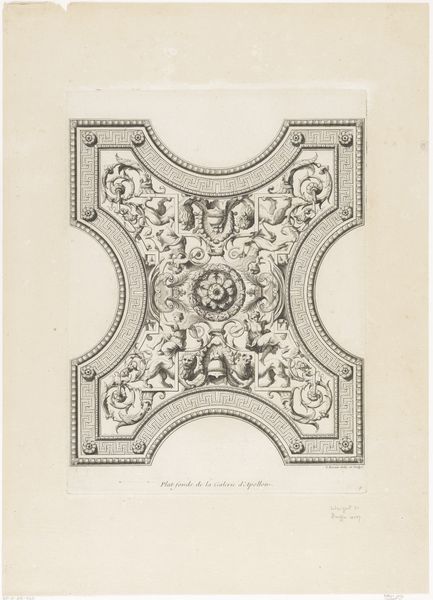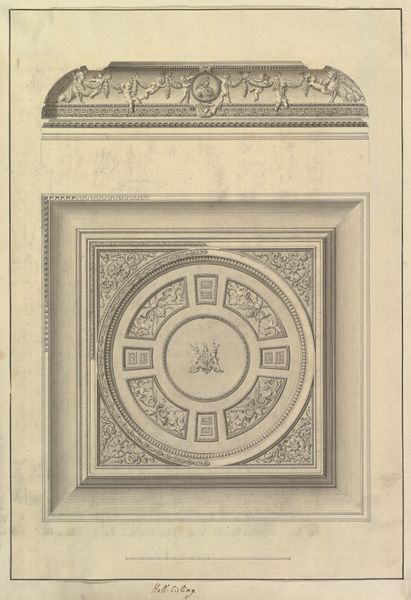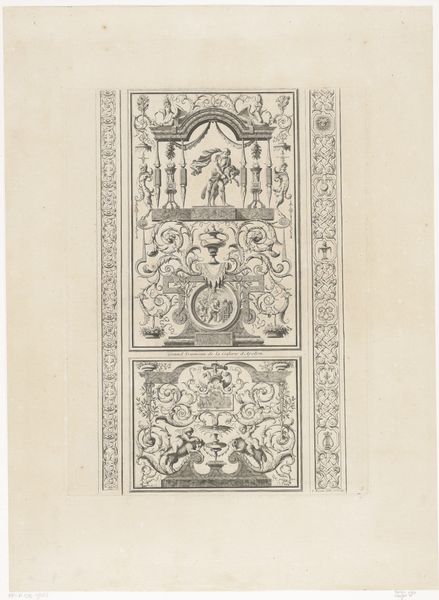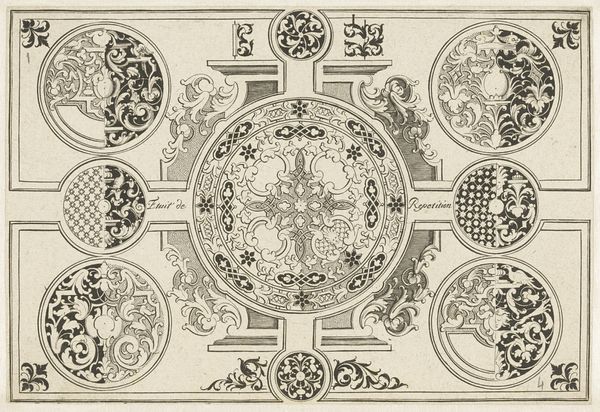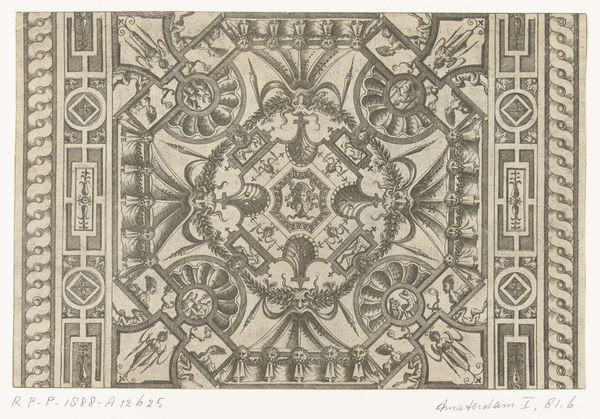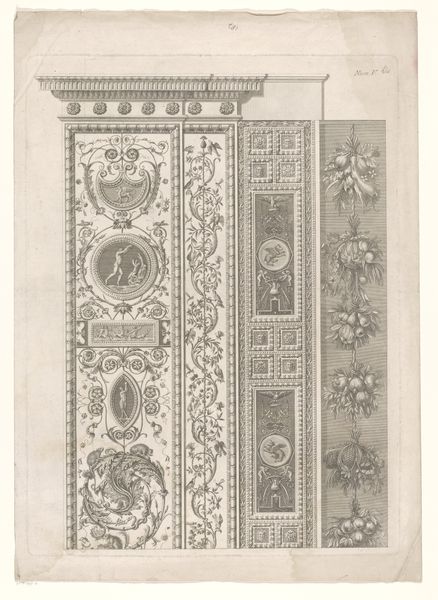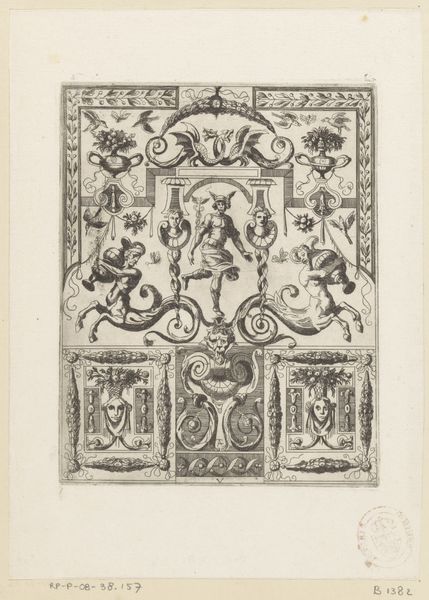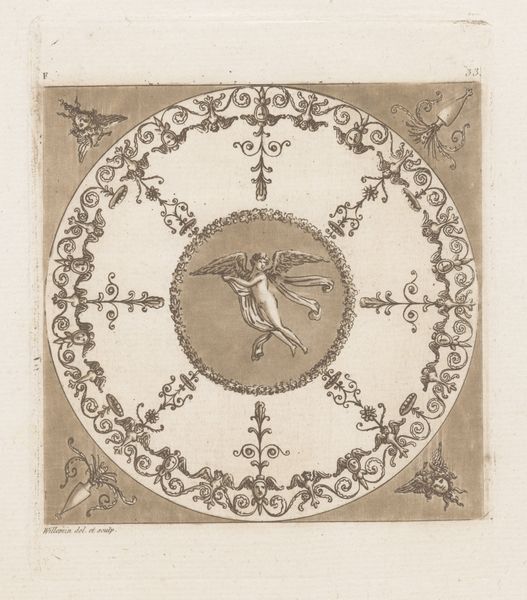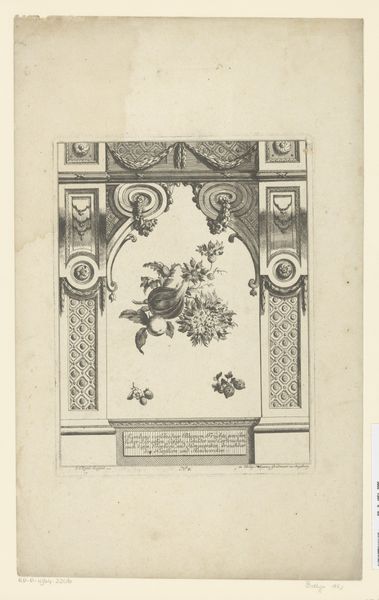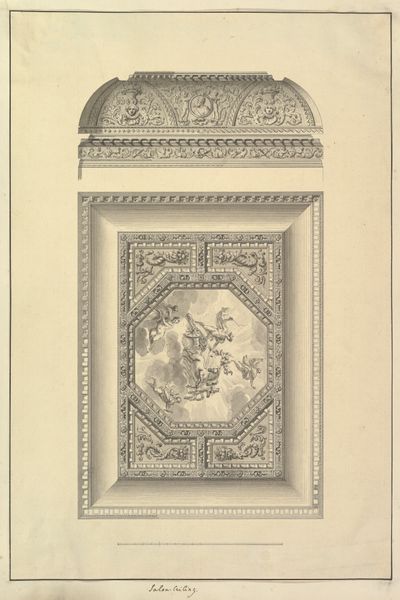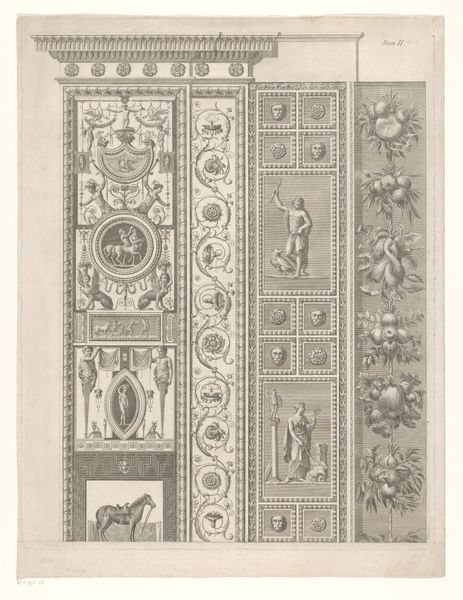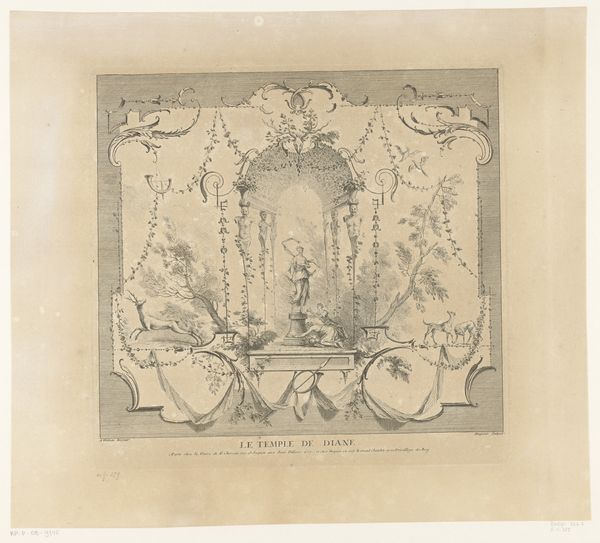
mosaic, print, engraving
#
mosaic
#
neoclacissism
# print
#
old engraving style
#
landscape
#
ancient-mediterranean
#
19th century
#
decorative-art
#
engraving
Dimensions: height 252 mm, width 182 mm
Copyright: Rijks Museum: Open Domain
This is an etching by P. Bouland, depicting a Roman mosaic, and dating from around 1778. The mosaic itself, according to the inscription, was discovered in the Bailliage of Grandson, Switzerland. Prints like this one played a crucial role in shaping the public understanding of classical antiquity. In the 18th century, archaeological discoveries became increasingly common, fueled by both scientific curiosity and the desire of European powers to emulate the grandeur of Rome. This print, with its detailed rendering of the mosaic's imagery and geometric patterns, served as a visual record and a form of cultural appropriation. Notice the central motif, which seems to depict a figure of authority seated on a lion throne surrounded by animals. This imagery likely resonated with contemporary viewers who were familiar with classical mythology. The institution of the museum and the rise of archaeology contributed to a renewed interest in the past, but that very interest was shaped by contemporary social and political concerns. To understand the print fully, one might consult archaeological reports, travelogues, and the correspondence of scholars and collectors of the period.
Comments
No comments
Be the first to comment and join the conversation on the ultimate creative platform.
